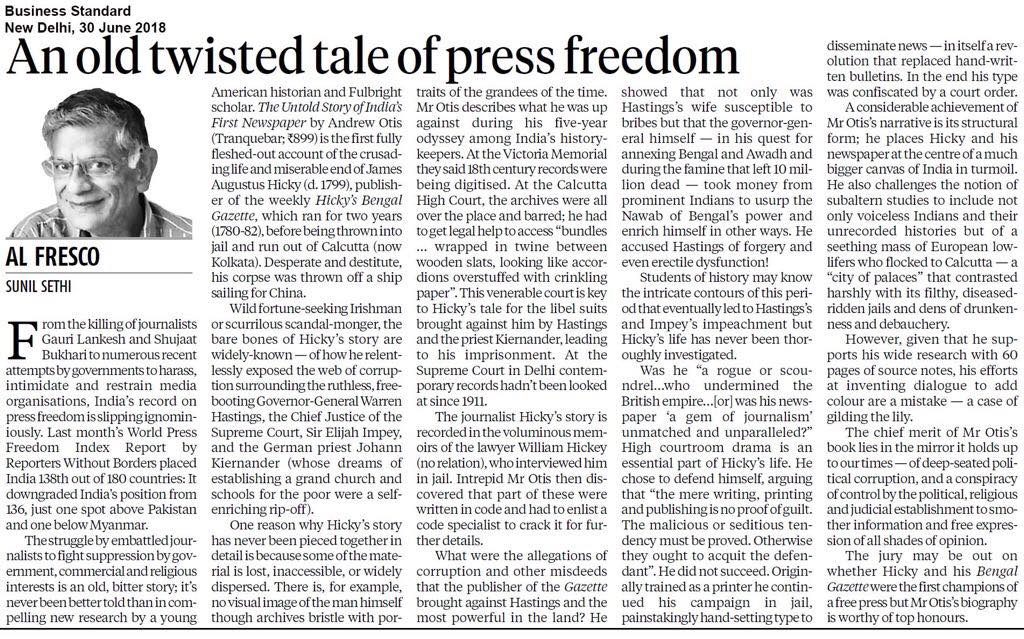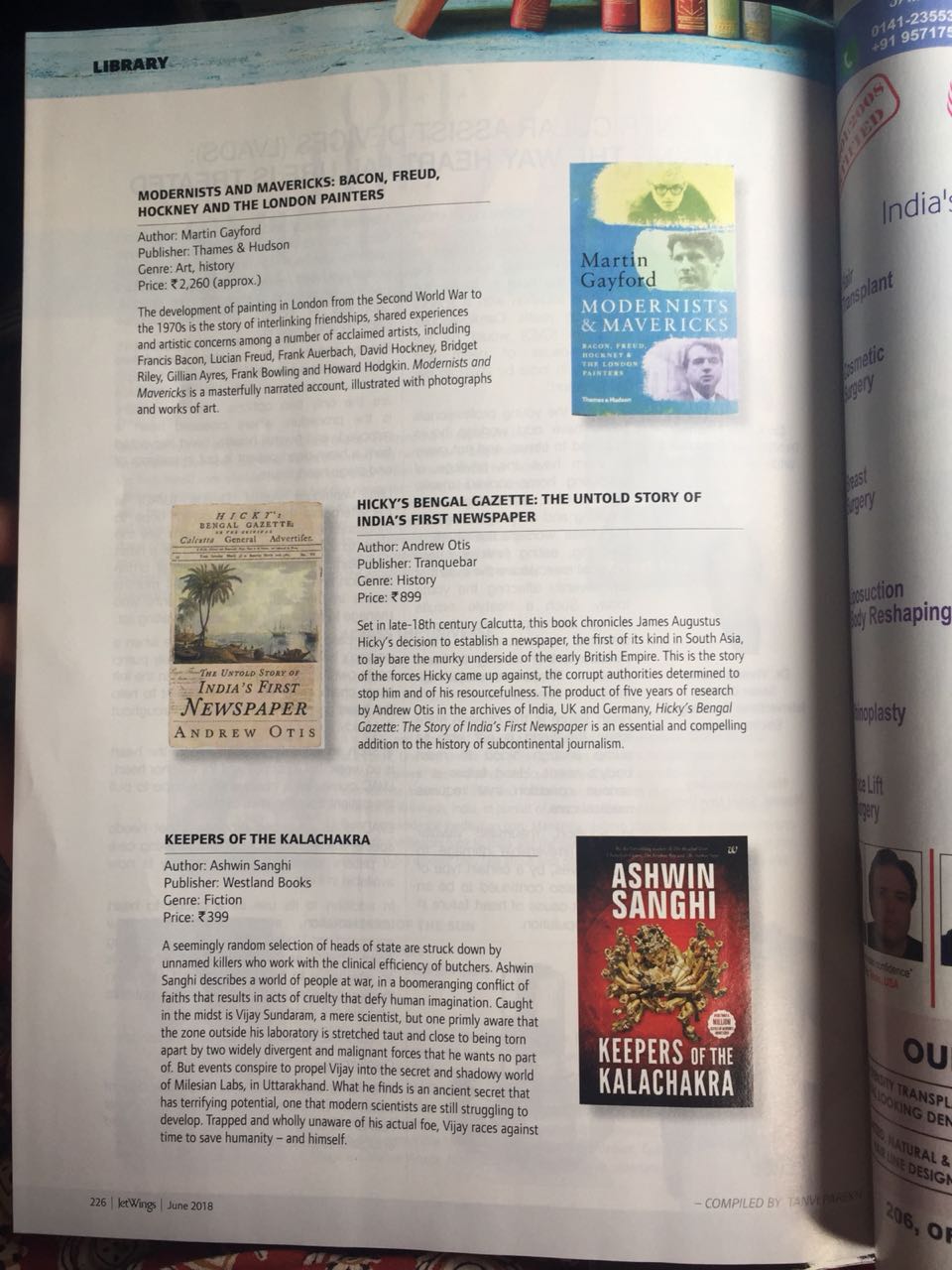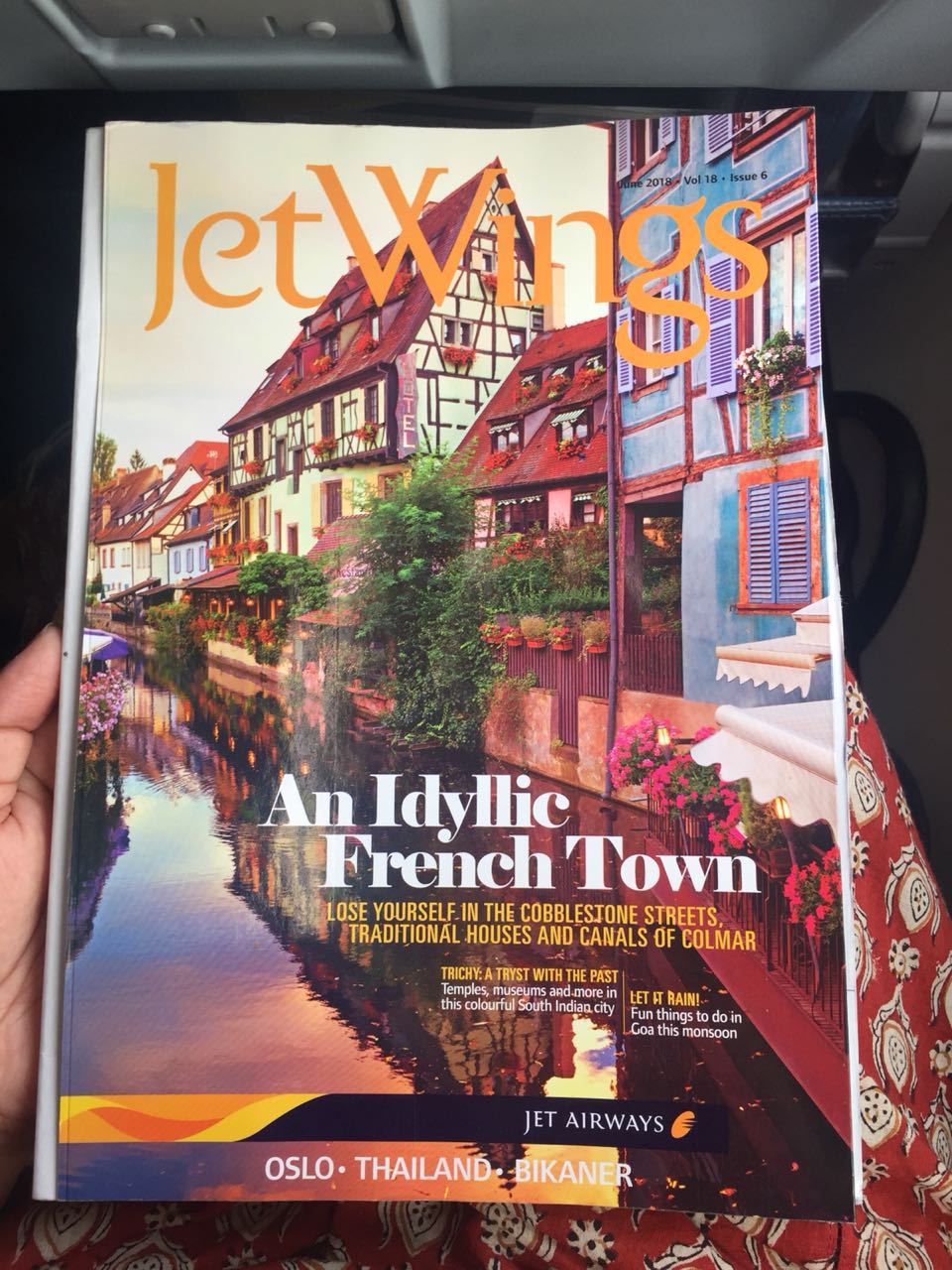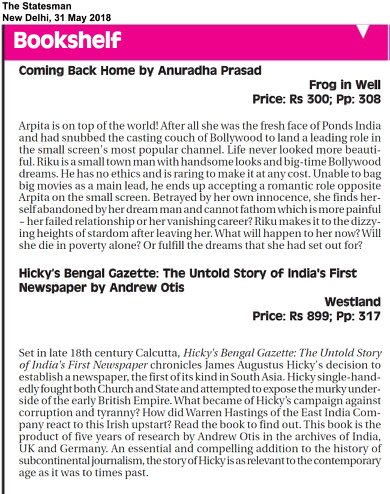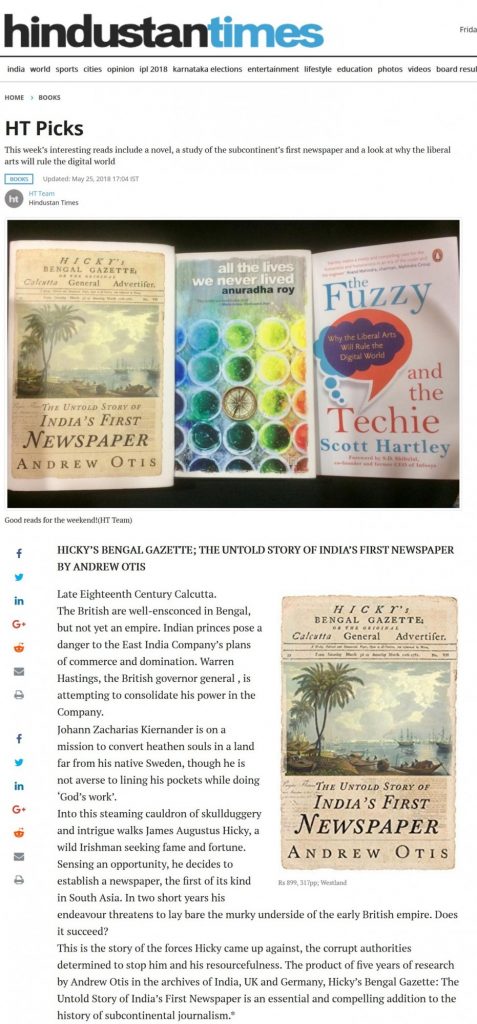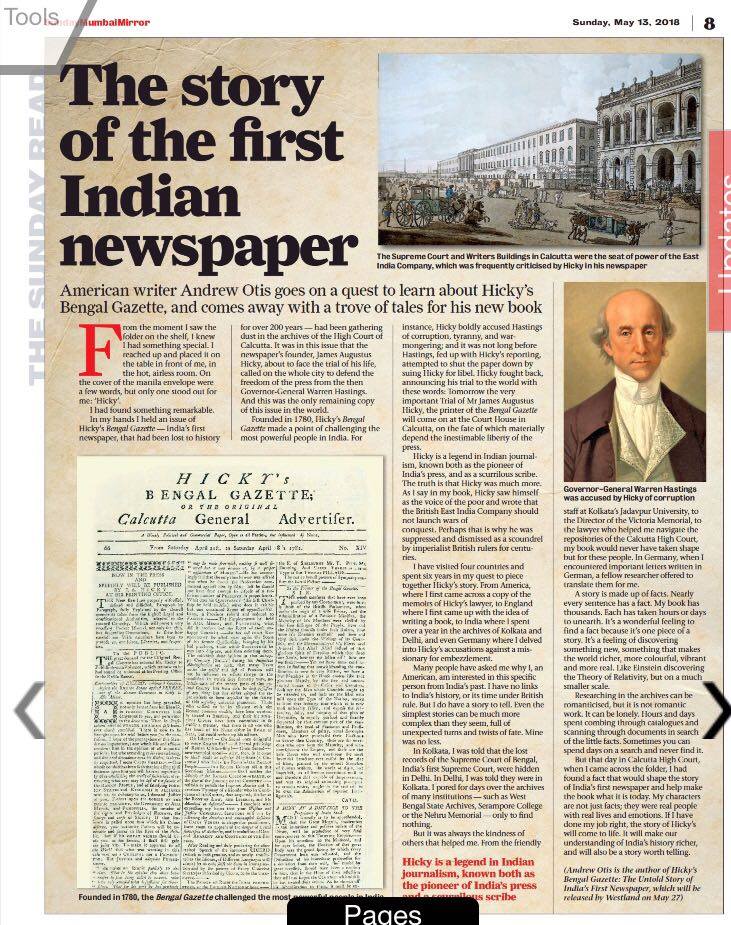Akshay Chavan of Live History India reviewed my book and interviewed me (apologies for the low quality copy-original in the link).
Viewpoint: What India’s first newspaper says about democracy
An op-ed I wrote for the BBC (apologies for the low quality copy-original in the link).
Review of Hicky’s Bengal Gazette: The Untold Story of India’s First Newspaper in Ei Somoy
Ei Somoy reviewed my book in their August 25 paper (page 8).
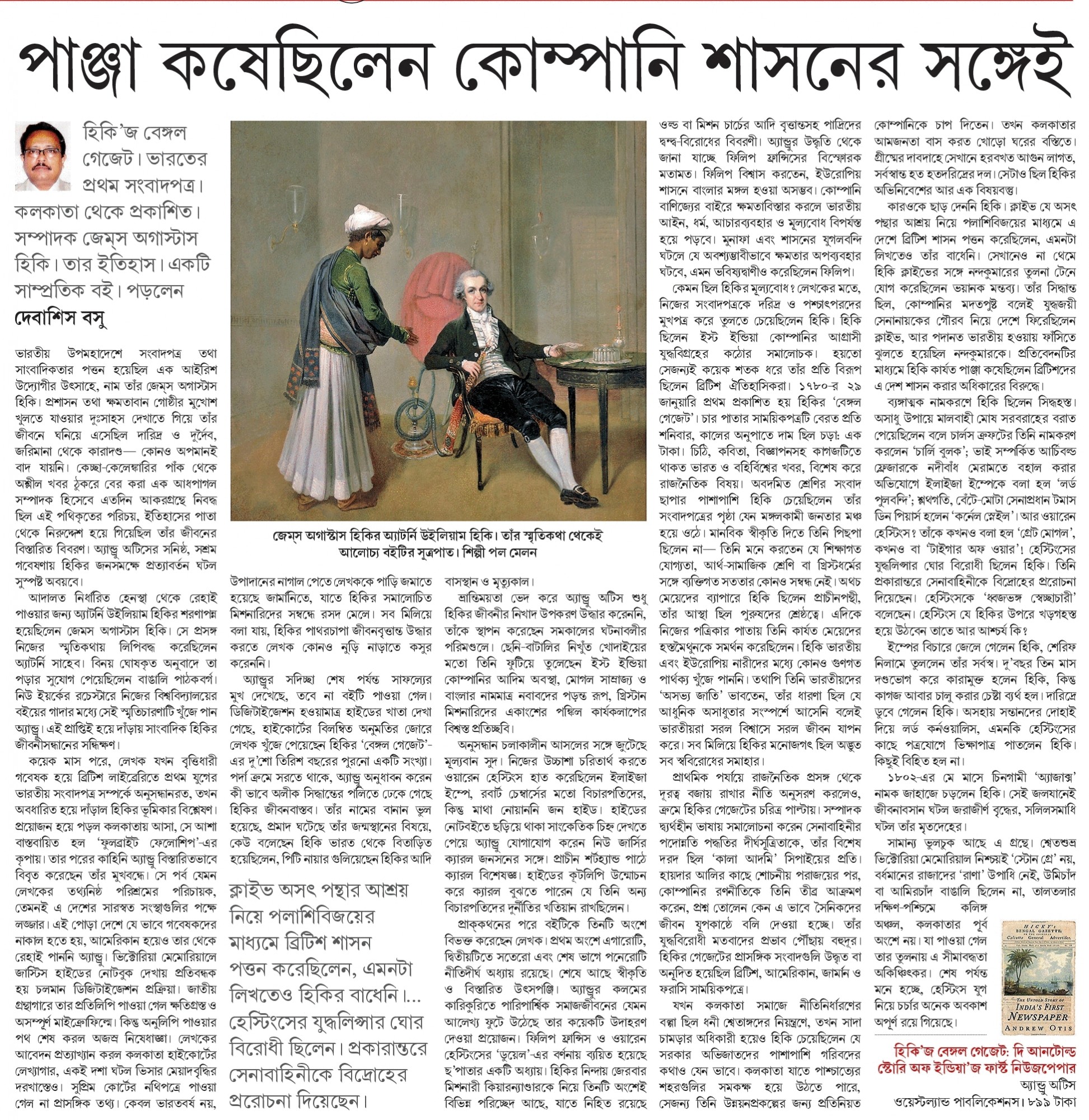
Review of Hicky’s Bengal Gazette: The Untold Story of India’s First Newspaper by Andrew Otis
The Asian Review of Books reviewed my book.
Review: Pioneer who printed from prison
R. Prasannan of The Week reviewed my book.
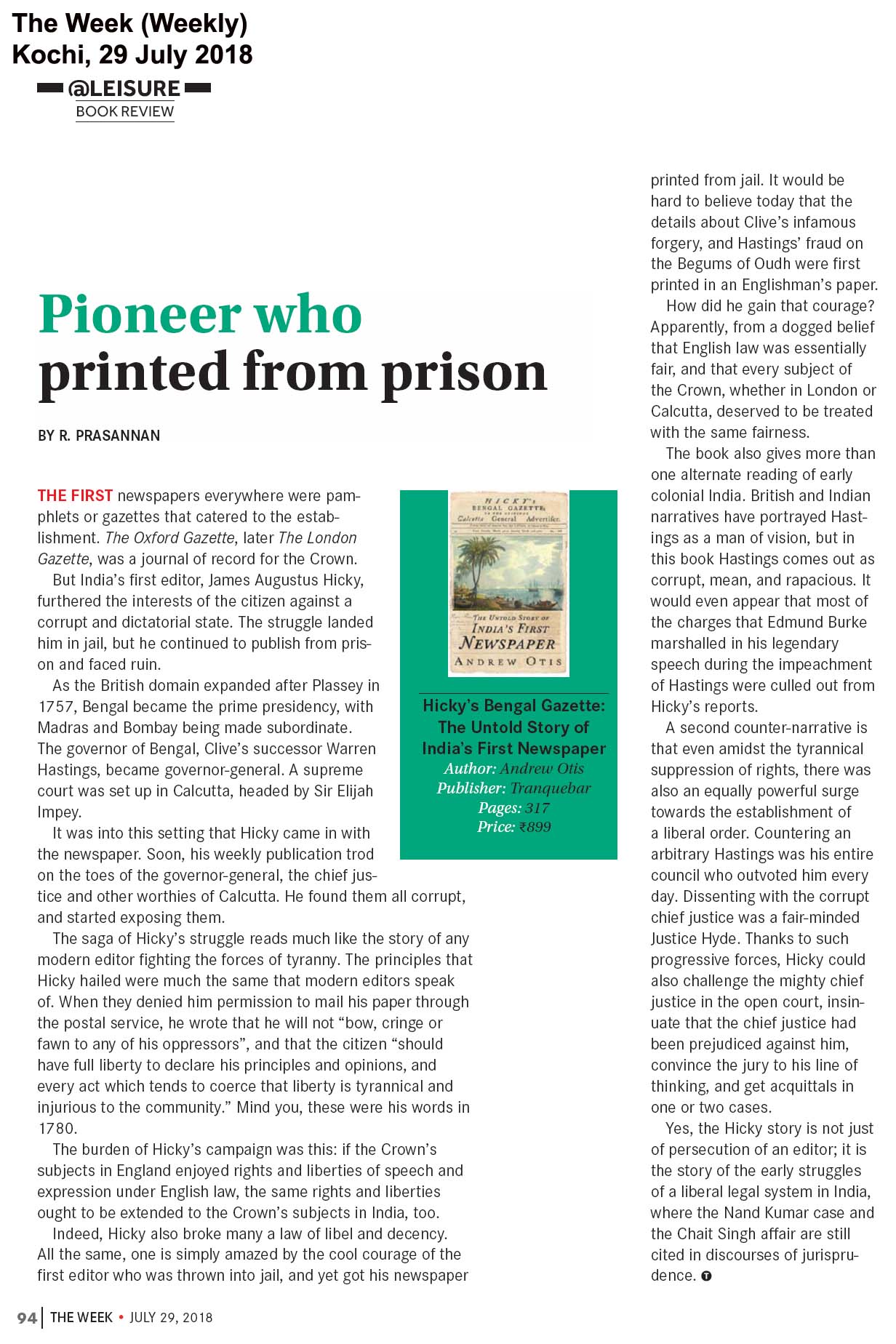
Review: South China Morning Post Gives Hicky’s Bengal Gazette 4/5 Stars
The South China Morning Post, Hong Kong’s leading English newspaper and paper of record, reviewed my book.
- ‘[Otis] makes this key piece of colonial history and Indian journalism both vibrant and droll, which is no small task.’
- ‘Reads like fiction … Hicky’s Bengal Gazette remains a compelling read all the way through to its elegiac conclusion.’
The Caravan Magazine ‘Bookshelf’
My book has been recommended by The Caravan Magazine in their July 2018 edition, on page 95.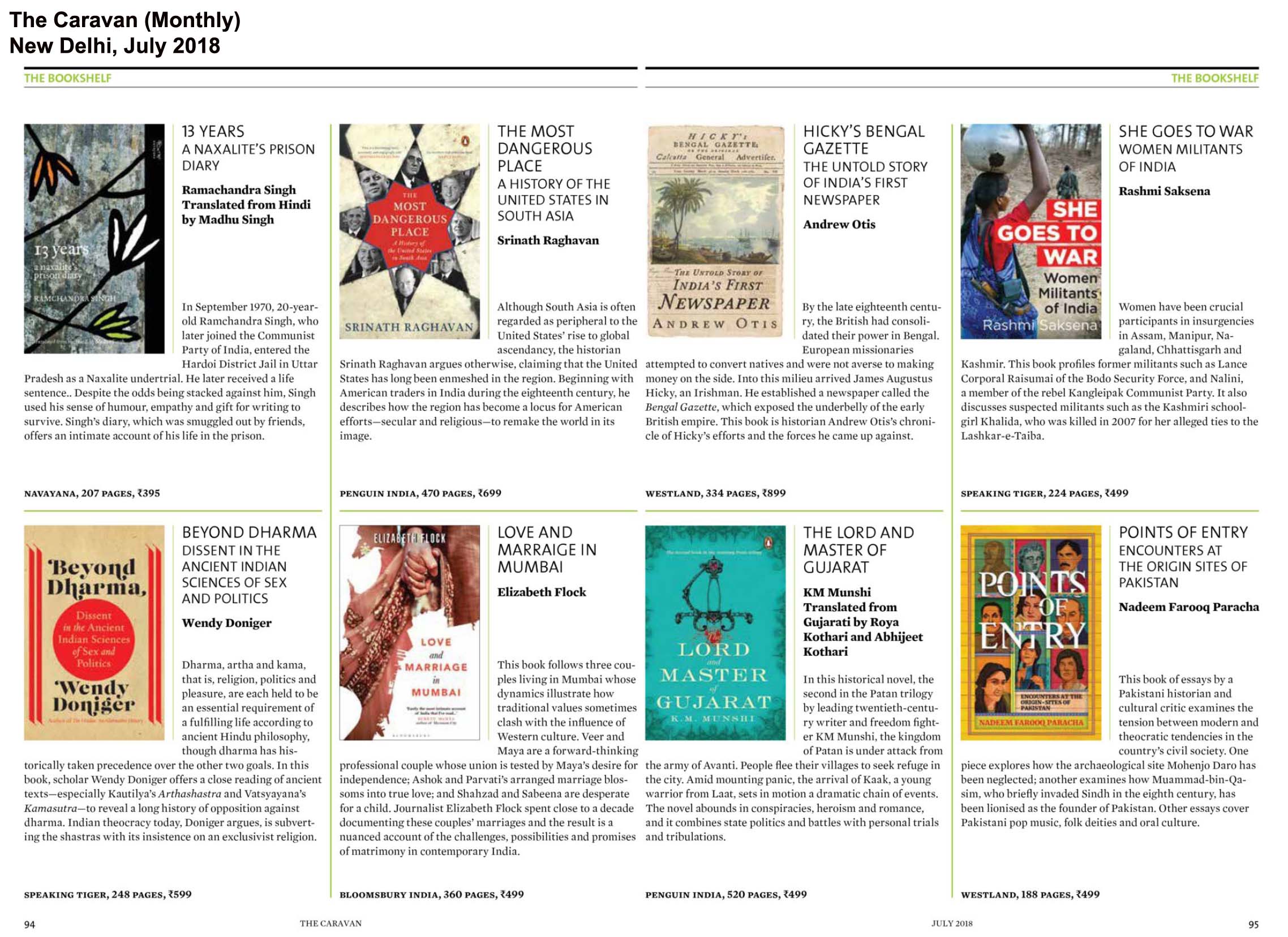
Review: An old twisted tale of press freedom
Business Standard newspaper published a glowing review of my book Hicky’s Bengal Gazette: The Untold Story of India’s First Newspaper.
Asia’s first journalist Hicky’s tradition still alive: Author
The Times of India interviewed me about my book Hicky’s Bengal Gazette: The Untold Story of India’s First Newspaper.

Featured in Mathrubhumi
Mathrubhumi, the second most widely read newspaper daily in Kerala, published an article on my book Hicky’s Bengal Gazette: The Untold Story of India’s First Newspaper.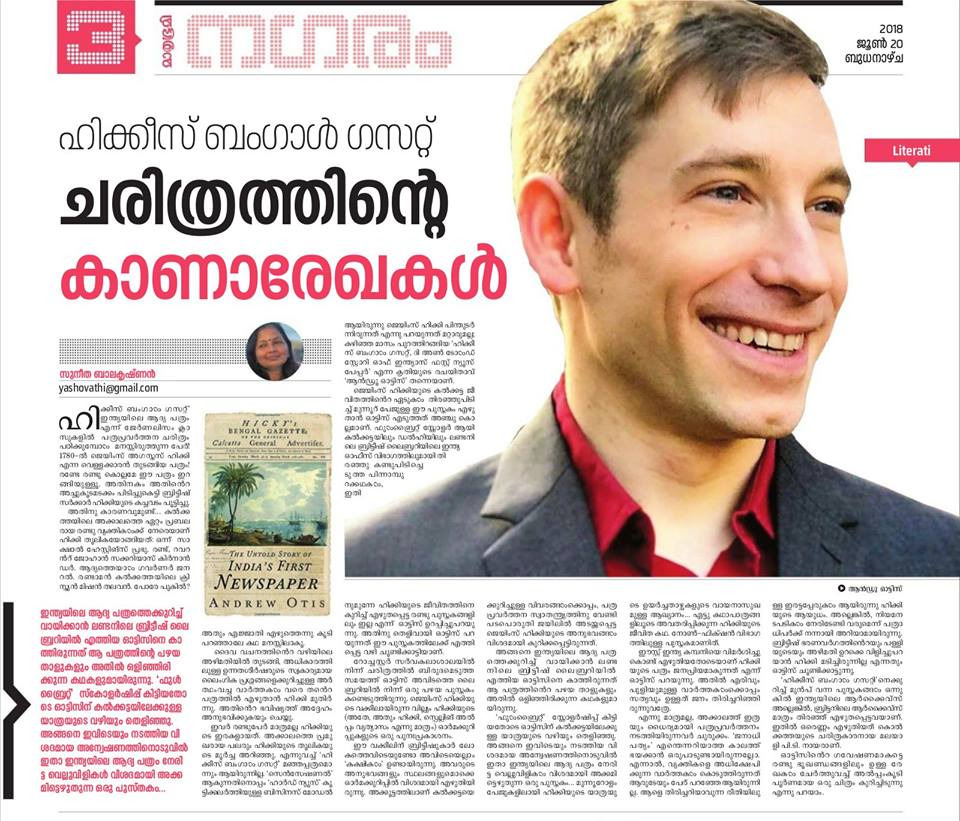
India’s first newspaper covered corruption and scandal (and sexual practices) fearlessly
I published an op-ed in Scroll.in about James Augustus Hicky and the importance of Hicky’s Bengal Gazette.
How India’s first newspaper exposed the corrupt British East India Company
Quartz India interviewed me about my book Hicky’s Bengal Gazette: The Untold Story of India’s First Newspaper.
A fine retelling of the story of James Augustus Hicky attempts, yet again, to rehabilitate the “scurrilous, wild Irishman”
My book was reviewed in the Indian Express.
Here’s how India’s first newspaper was launched
My book was featured in Indian Today.
Featured in Jet Airways In-Flight Magazine
The Statesman Recommends Hicky’s Bengal Gazette: The Untold Story of India’s First Newspaper
When the Founder of India’s First Newspaper Refused to Surrender His Right to Print
The Wire published an excerpt of my book Hicky’s Bengal Gazette: The Untold Story of India’s First Newspaper.
Hindustan Times Picks
Hindustan Times, a Indian daily newspaper, selected my book Hicky’s Bengal Gazette: The Untold Story of India’s First Newspaper as one of their top picks.
Hicky’s Bengal Gazette: Read an excerpt from a book on India’s first newspaper, the people it featured
FirstPost published an excerpt of my book Hicky’s Bengal Gazette: The Untold Story of India’s First Newspaper.
The Story of the first Indian Newspaper
I published an article (link) in the Mumbai Mirror, a leading Indian daily newspaper about my book, Hicky’s Bengal Gazette: The Untold Story of India’s First Newspaper.
Syndicated in the Bangalore Mirror, the Pune Mirror and the Ahmedabad Mirror.
Rejoice, Americans Rejoice!
When news reached Calcutta in the spring of 1780 that the American rebels/revolutionaries had signed a treaty with France, and that France would be joining the war against Great Britain, Hicky’s Bengal Gazette published the following satirical poem. Poetry was a common way of expressing political and social views in the 18th century.
It compared Americans to frogs and the French king to a stork. Americans’ initial joy would turn to sorrow, he wrote, when they realized that the French King loved nothing more than to eat frogs!
This poem is significant as a witty example of how English in another distant corner of the British Empire thought of the “treasonous” Americans.
Rejoice, Americans, rejoice!
Praise ye the Lord with heart
and voice;
The treaty’s sign’d with faithful France,
And now like Frenchmen, sing and
dance!
But when Joy gives way to reason
And friendly hints are not [akin to] treason
Let me as well as I am able,
Present your Congress with a fable.
[Tied down] with happiness, the frogs
[Sedition] croak’d through all their bogs
And then to Jove the restless race,
Made out their melancholy case
Fam’d as we are for faith, and pray’r,
We merit sure peculiar care,
But can we think great good was meant us
When legs for Governors were sent us?
With numbers crushed they fell upon,
And caused great fear; — till one by one
As courage came, we boldly faced ‘em
Then [heaped] upon ‘em, and disgraced ‘em
“Great Jove”, they croak’d, “no longer
fools us,
None but ourselves are fit to rule us:
We are too large, too free a nation,
To be incumber’d with taxation.
We pray for peace but wish confusion
Then right or wrong a revolution!
Our hearts can never bend t’obey;
Therefore no King—and more we’ll
Pray
Jove smil’d, and that to their fate resign’d
The restless, thankless, rebel kind.
Left to themselves they went to work;
First signed a treaty with King Stork,
Who swore that they with his alliance,
To all the world might bid defiance.
—Of lawful rule there was an end on it
And frogs were henceforth independent
At which the croakers, one and all,
Proclaim’d a feast and festival!
But joy today brings grief tomorrow;
Their feasting o’er, now enters sorrow
The Stork grew hungry, long’d for fish!
The Monarch could not have his wish
In rage he to the marshes flies;
And made a meat of his allies;
Then grew so fond of well-fed frogs
He made a larder of the bogs!
Say, Yankies, don’t you feel compunction,
At your unnatural, rash conjunction?
Can love for you in him take root,
Who’s Catholic and absolute?
I’ll tell these croakers how he’ll treat ‘em
Frenchmen, like storkes, love—frog
to eat ‘em.
Trekking Sandakphu, April 20-23
At daybreak at 5am, we had beautiful views of Everest, Lhotse, Makalu and Kachenjunga, the world’s four tallest mountains (With the exception of K2 in pakistan), all around or above 8500 meters.
Our trek up Sandakphu was four days and three nights. The first day was a 17m hike from Mane Bhanjang to Tumling at 2900 meters. The second 19km stretch took us to Mt. Sandakphu, West Bengal’s tallest mountain at 3636 meters. This was not the first time I had seen these mountains, but it was by far the most amazing.
Along the way we stopped in cabins and had chow mein, momos (dumplings) and/or fried rice. The British built a rock and dirt road up to Sandakphu in the 19th century and it looks little repaired since then. It extends some 36 km up 1600 in elevation with numerous changes in elevation. We hiked that, and then down a forest of birch, rhododendron, and bamboo — traditional red panda habitat — on the third and fourth days to the town of Rimbik and then back to Darjeeling, where we were staying.
Each of the cabins had photos of white babies and cute sayings, that, or strange idyllic photoshopped posters of homes in the west, with gleaming corvettes in driveways, swans in lakes and houses covered in snow. Strange.
There is no electricity along the way but frequent way stations with squat toilets. Houses have no insulation, heat or water. Only solar electricity All is carried up by jeep. The days in April were warm but the nights frigid at high altitude. In all, the path we took saw us cross between Nepal and India four or five times. Each time we crossed into India the Indian army had us sign our names and take down our passport numbers in traditional Indian bureaucratic style. The Nepalis could care less. There were no Nepali army stations.
When we asked our guide where the Nepali army was, he said, “There is
no Nepali army.”
Unlike much of India, in the hill country, there is a blending of
Buddhist and Hindu religions. Tibetan language signs and Nepali
intermix freely, so do monasteries sit near each other.
